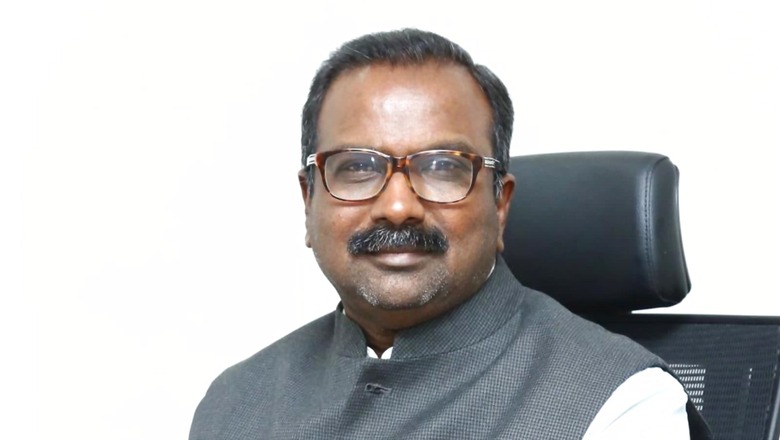
views
It is time for India to capture the market of complex generics and biosimilar products after proving its capability in manufacturing Covid-19 vaccines, said a top pharma official in the Narendra Modi-led government.
“With the innovation of indigenous Covid-19 vaccines, India has proven its R&D capabilities to the world and to sustain the leadership position, Indian pharmaceutical companies need to spend more time in the development of high-technology, scientific products,” Udaya Bhaskar, director-general, Pharmaceuticals Export Promotion Council of India (Pharmexcil), told News18.
Pharmexcil is an arm that functions under the ministry of commerce and industry, set up under the provisions of the Foreign Trade Policy in 2004 and is a body for promoting pharmaceutical exports from India.
According to Bhaskar, learning from the Covid-19 pandemic, every country has now planned to reduce dependence on raw materials for manufacturing essential drugs by establishing in-house units.
“Now, our focus should be on research and development and getting into the newer stream of drugs and vaccines,” he said, adding that “for instance: biologics are now expanding and Indian pharma companies need to focus on them along with biosimilars, metred and complex generics.”
Bhaskar said pre-filled syringes and implants were also the new areas of focus. While the profit-linked incentive (PLI) scheme will help to reduce the dependence to some extent, there was a need to move aggressively, he said.
For the financial year 2021, North America and Europe constitute 51 percent of India’s total pharma exports. “It shows that India supplies high-quality products exported into highly regulated markets of the world. These regions being trendsetters are important,” he said. “Hence, developments and thinking of these two regions would be of interest to India’s pharma exporters. India has 18% of US FDA registered facilities, the second largest source outside of the USA.”
While the market for conventional generics is still in demand as they are cost-effective and many European and CIF countries are struggling with bad economies, manufacturing vanilla drugs is no more a “rocket science”. “Many countries, including Bangladesh, Vietnam and Indonesia, apart from China have been trying to capture this market and, in fact, their costing also matches to India,” Bhaskar said.
“Hence, we need to start early into complex generics and other latest drugs and formulations categories to sustain our leadership in the world’s pharmacy map,” he added.
Changes in the global pharma industry
Pharmexcil is an observer of the latest developments in global pharmaceutical markets which informs the governments about its observations and helps in the industry’s preparedness. “Global pharma industry is undergoing changes,” Bhaskar said, adding that the “blockbuster pharma products are now hard to come by. New products seem to address specific and niche needs commanding smaller markets in traditional pharma.”
“Some of the regulatory agencies like the UK’s Medicines and Healthcare products Regulatory Agency (MHRA) and the US’s Food and Drug Administration (US FDA) have started accepting biosimilar interchangeability. This will encourage more biosimilars.”
Is India exploring new export destinations?
The government, he said, is exploring various possibilities including extending financial concessions and minimising import dependence of at least essential patent medicines. “They are considering local production or reshoring supply chains to regional peers,” he added.
“Though a few months ago, Europe thought of promoting European-made pharmaceuticals by strengthening manufacturing and supply resilience throughout the EU… they are now having second thoughts.”
This is due to their slow economic growth and high dependence on import fuel to drive their industries, which are now highly volatile in their price. “They are looking to go in for contract manufacturing in low-cost economies,” he said.
“Even China, which is subsidising exports, wants to shift some of their bulk drug industries to Vietnam and even India is on their radar to reduce their subsidies and focus on high-cost products,” Bhaskar said.
India covered almost the entire globe with its pharma exports and, for India, the term “newer markets” could be applied in terms of “deeper penetrations trying to cull out higher market shares through a wider range of products like complex molecules, biosimilars and device delivery drugs,” he said.
Status of the Indian pharma market
India’s pharmaceutical exports mainly depend on the growth of the global generic market. From 2016 to 2020, the global generic market grew at a compounded annual growth rate (CAGR) of just 2 percent.
Some estimates suggest that volumes in 2021 have not grown and, more or less, remained stable. In fact, IQVIA forecast that volume growth during the next five years may grow at a CAGR of just 1.5 percent to 2 percent.
As against this global trend, India’s generic exports – drug formulations and vaccines – have grown by a CAGR of 9 percent during the last five years. The exports of vaccines have grown steadily except for the FY2017 (stocking of yellow fever vaccines was high in FY16 in the African region as per the norms of WHO and later restored normalcy caused negative growth).
Status of imports and exports to China, new emerging competitors
India’s exports to China have grown by 30 percent during the FY2021 mainly because of Covid-19. Exports to China were just 0.86 percent of its total exports in FY2016 and have gradually moved to 1.36 percent by 1.36 percent, shows the data by Pharmexcil.
India is dependent on imports for intermediaries and key starting materials (KSMs) from China. Bulk drug imports or active pharmaceutical ingredients (APIs) from China constitute on average 66 percent of total bulk drug imports.
According to Pharmexcil data, the Asia Pacific region in which India is situated is the largest region for generic consumption as well as production. “Indonesia and Vietnam are likely to emerge as strong competitors besides some competition from Bangladesh,” Bhaskar said.
He said: “Africa with some six to seven new vaccine units (SII is also lending technology and has some stake in South Africa) and also some pharma generic units also pose a competition.”
Read all the Latest India News here


















Comments
0 comment